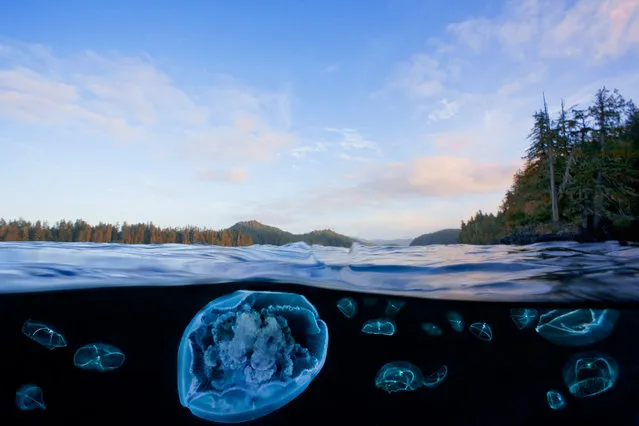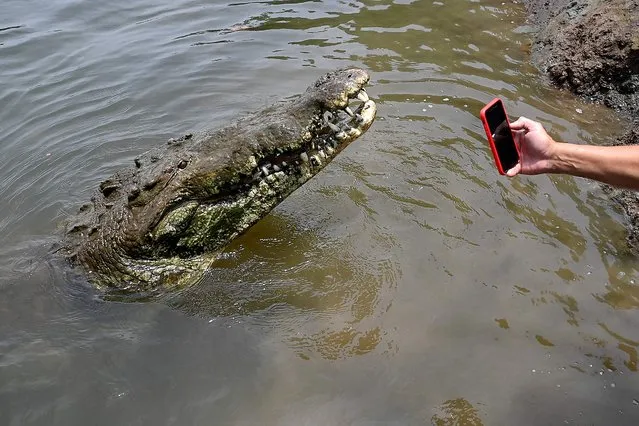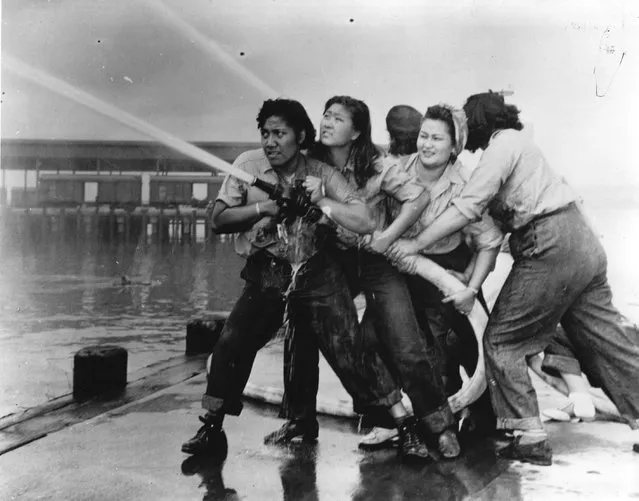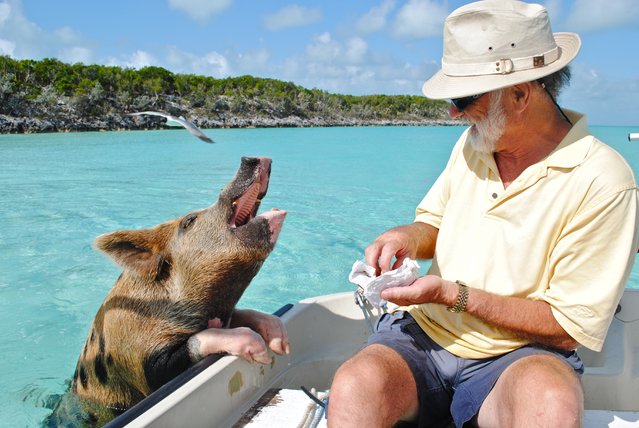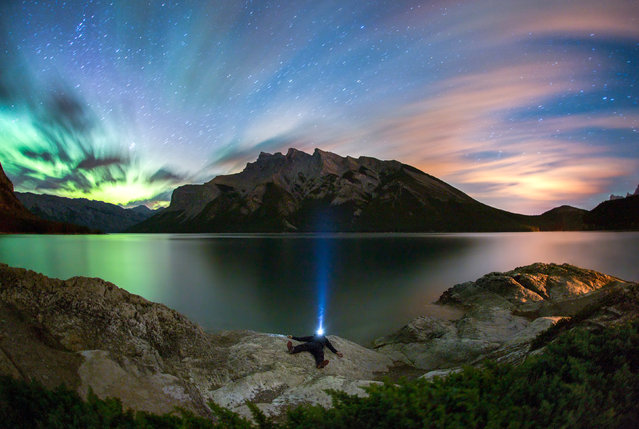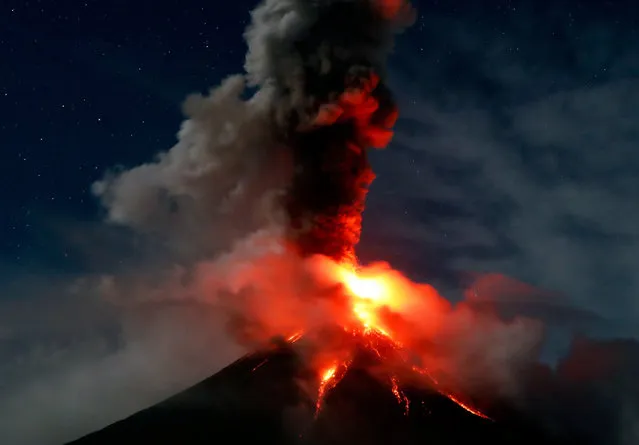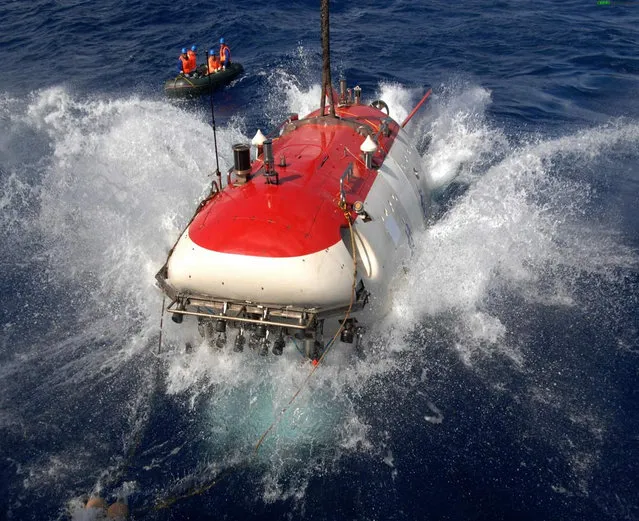
Submersible “Jiaolong” is put into the sea for the second dive during a series of six scheduled ones to attempt the country's deepest-ever 7,000-meter manned dive on June 19, 2012 in At Sea, Unspecified. The submersible “Jiaolong”, carrying three people, reportedly reached a depth of 6,965 meters in the Mariana Trench, the deepest part of the world's oceans which is located in the western Pacific Ocean, on June 19, local time. (Photo by China Foto Press)
21 Jun 2012 09:54:00,post received
0 comments


